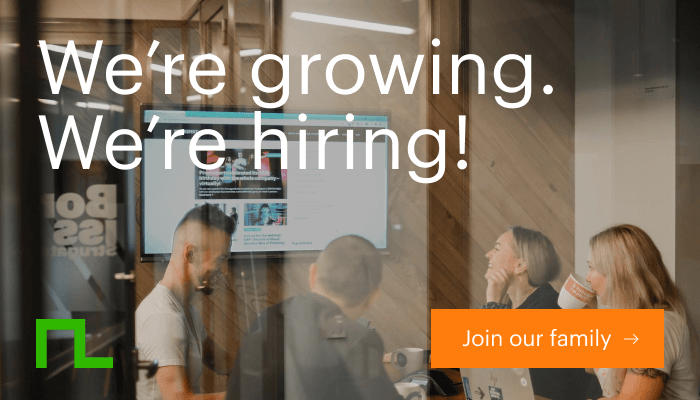How to assess your service idea?
If you have a service idea, this blog post will outline matters you’ll have to face sooner or later. Addressing these areas early will help you enter into service development with a clearly identified and focused service idea.

First, let’s define service. In the context of this article, we consider a service to be a distinct, deliverable function developed according to the needs of a consumer who benefits and to whom value is delivered.
The outlined aspects will help you decide whether to pursue further design of a new service, as well as eliminate bad service ideas with low development potential. You may also use it to examine existing services to see if something can be improved.
Set your expectations for the service
Setting expectations is essential. Expectations bring clarity and focus to the process allowing you to make a go/no-go decision faster and more effective.
Will the service become a primary service for your business? Will revenue increase due to the service? Do you want to explore and test a new market and target audience?
Clearly defined expectations will act as your North Star, guiding you through the following points. Expectations should always be in the back of your mind, and your answers to the questions below should always, by default, align with your expectations. You don’t have to always have high expectations for your service. Low (yet very specific) expectations are also fine. It’s not always about earning millions. Validating a product on a specific market may suffice.
Define the purpose of your service
This is the most basic thing you must do when assessing, developing, or evaluating something. The main question to ask: Is this service actually needed?
Understand the pain your customer feels which will make them turn to your service. When assessing the idea, consider these questions:
- What triggers the user to want and need your service? (What brings users to your service?) Is your service a “nice to have” solution, or is it a necessity?
- What factors prevent users from resolving their problems? This question will give you insight into where the need for your service comes from. This opens a door for a possibility to upgrade, deepen, or expand your idea.
- What will the user’s life look like once they commit to using your service? How will it make the user’s life better? This is an essential point in assessing your service’s market potential. Having in mind the impact you want your service to make is important. Your user’s life must be better once your service is used. If you see no scenario where that may be the case, you should reconsider the service idea.
Scalability of your service
Scalability in this context refers to the capacity of a service to adapt and develop in accordance with changes and market relevance. Evaluating the scalability of your service is necessary to assess its market and growth potential, and thus long term profitability. Does the service have the potential for introducing novel and useful tools, features, methods, and experiences to sustain customer expectations?
The first step is to define the scalability criteria that correspond to your company’s expectations. Scalability is unique to every service, but it must be defined. Once it’s done, create a model canvas analyzing your service idea and outlining its development and expansion potential. Next, based on the current market research, map the information you have produced to the criteria you have set. If there is no match, or if the two are far off and can’t be reached, this is a signal that something needs to change. Decide which of these two are non-negotiable for your company and change the other to fit your ideas. You have the option to alter your scalability criteria to fit your service idea. Or make changes to your service idea so its potential serves your set criteria.
To assess the market relevance of your service idea from the point of its scalability, the following questions may be useful:
- Is the relevance of the solution temporary or long-lasting?
- Does it have the potential to be marketed well?
- Assess the market: does the service have a niche and a clear target group?
- What is the profit potential?
- Does your service create an opportunity for your user to “invest” in? It has been proven countless times that the more effort we put into something, the more we value it.
Risk assessment in service design and development
When it comes to risks, there are many to consider while you’re dealing with the development process. However, while you’re assessing an idea, there is no need to create an elaborate risk matrix. Outline the biggest risks you see associated with the idea. This will help you see if the mitigation strategies for the biggest risks are something your company is ready and willing to deal with at the moment.
- What are the current and potential future challenges for this particular service design and development?
- Is this field too crowded?
- What are the pros and cons of market entry?
- What are the potential service liabilities? Can they be managed?
Briefly map how your users would come to the service, from the time they feel the internal trigger to the point they receive the expected outcome. What does the process look like? How does it compare with competing services?
Skills and maintenance
Services don’t happen by themselves. You need a team or teams to deliver them continuously. While assessing your service idea, consider the following questions:
- What are the skill sets needed?
- Do all the needed skill sets exist and are they available within the company?
- What maintenance and support are needed once the service is in place?
These are the most basic aspects to consider from the very beginning, so you may decide if your company has all the human resources and skills available and, if not, what and how much should be engaged externally.
Keeping in mind the maintenance of the service is also important in the early stages. This will allow you to consider how you will be allocating your resources.
Define your limits
Is there a minimum and/or maximum number of users for your service to operate smoothly and fulfill user expectations?
If the idea is unable to meet company profitability requirements, perhaps you should alter or reconsider your idea.
Setting a limit on potential users will give you perspective on the number of resources the service idea requires in order to be profitable. It will also allow you to determine your company’s capacity to deliver on those requirements before the engagement of additional users becomes necessary.
Mission compatibility
Your company should have a mission statement. Why do you do what you do?
Proekspert’s mission is to eliminate digital waste: wastes of time, money, talent, and potential. We entirely eliminate inefficient actions by building human-centric digital solutions. Every day we act in accordance with our mission by checking whether initiatives we want to pursue correspond to it.
A mission is a flag everyone can rally behind – it boosts your company culture, as well as your overall efficiency. Aligning your service idea with your purpose is paramount to the success of its design and development, so before you move forward with the idea ask yourself:
Does the idea fit with your company’s mission statement?
And the answer should be YES.
Ideally, your work should be aligned with meaning and help cultivate meaning for others.
It is not only good for KARMA but it is a business necessity.
The “me” test
This is something that I always keep in mind while assessing almost everything I do for clients: I put myself in their shoes.
In this context I would ask: Would I use this service myself if I had the need? Why?
This is something that helps me maintain belief in the service. It adds motivation by working on something that I know I would be happy to use myself.
Take time to always thoroughly assess your service idea
Taking your time to do an initial iteration over these aspects before moving deeper into design and development of your service will save you significant resources and time. It allows you to discover potential weaknesses, advantages, and opportunities for the idea. You might start off with one service idea and along the way come out with another idea that proves to serve your purpose in a more effective manner.
Need help with the design and development of your service idea? Share your challenge with us.














